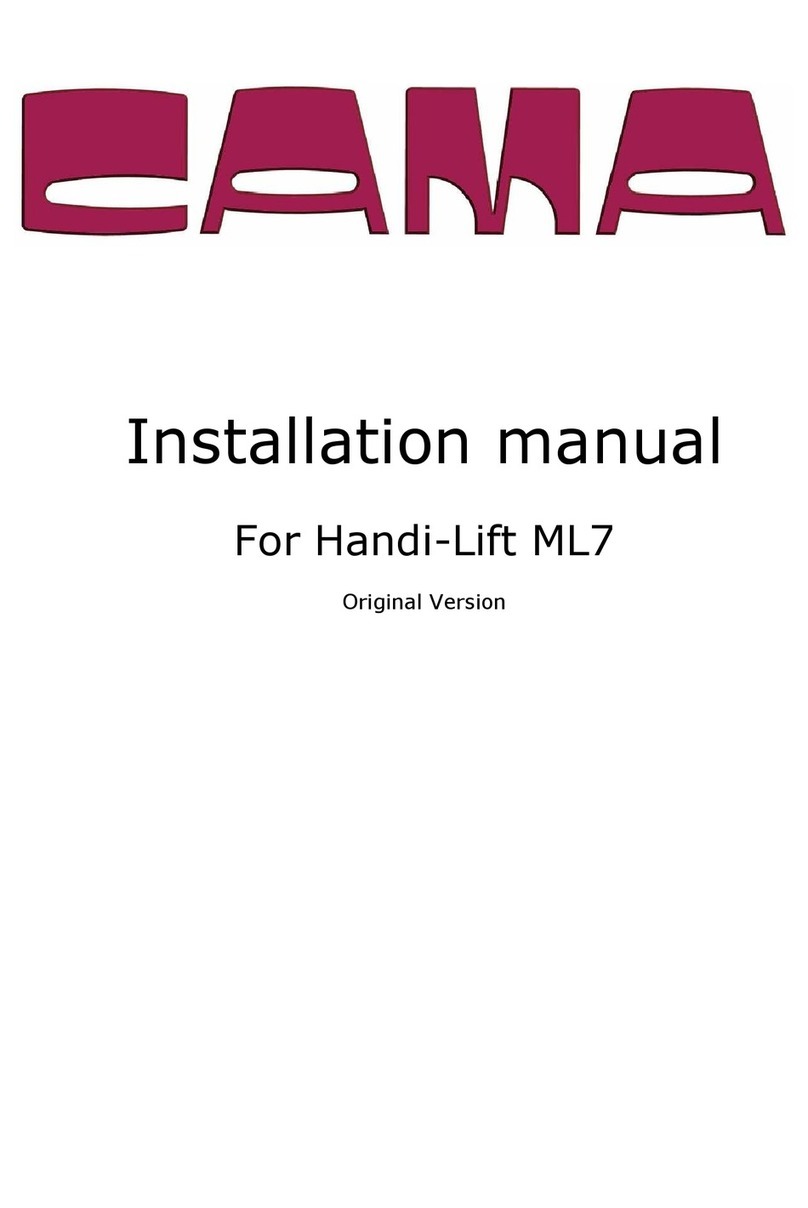
Handi-lift 7
20 0 Page 5 Version .0
Type EA7 is a fully-automatic lift, where the user does not have to operate anything
manually, all operations are electrically controlled.
The Handi-Lift consists of a rail in aluminium and a lift carriage with foldable platform.
The lift is equipped with barrier arms and flaps on the front and back of the platform.
When touching the flaps, the plate under the platform or the safety plate under the lift
carriage the lift will stop automatically to prevent jamming danger.
The Handi-Lift is designed for a wheelchair-user or a seated person (this demands a fold
down seat). We cannot recommend standing up on the lift. The lift can either be
operated by the user or a helper (the helper may not be on the lift together with the
user). The lift is designed for straight stairs and is manufactured individually with
consideration to the stair and its width. The lift can be delivered for both indoor and
outdoor use.
The Handi-lift may not be used by severely handicapped persons without a helper,
children as well as people influenced by medicine, alcohol or other drugs. It may not be
used to transport construction material, furniture, animal, foodstuff, cleaning equipment,
chemicals, kitchen hardware and similar unless the lift is made for these purposes. The
lift may never be used for burdens that exceed the lifts weight limit. Please note that the
lift is equipped with a weight cell, which means that if the lift is used with too much load
(overload), the lift will automatically stop after a few centimetres. The control lamp will
flash and the lift will send out a sound signal. The system will be restored be returning to
the starting point. (See the passage “What to do if your lift fails to operate”). The Handi-
lifts lifting capacity is as standard 225 kg, but can be delivered with a 300 kg capacity
(see the lifts type sign). Please note that when the lift is parked you must be able to
open main doors and emergency exits.
In case of fire do not use the lift.
1.3 Generally about the lift:




























